|
John Tyman's Cultures in Context Series AFRICAN HABITATS : FOREST, GRASSLAND AND SLUM Studies of the Maasai, the Luhya, and Nairobi's Urban Fringe |
|
|
|
14. The Mudanyi Family : 154-176 |
|
John Tyman's Cultures in Context Series AFRICAN HABITATS : FOREST, GRASSLAND AND SLUM Studies of the Maasai, the Luhya, and Nairobi's Urban Fringe |
|
|
|
14. The Mudanyi Family : 154-176 |
Click for full-screen images
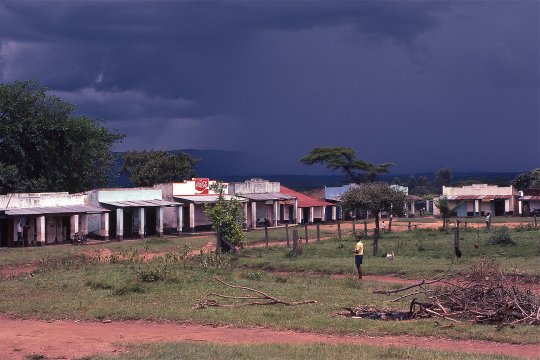 |
| 154.The Mudanyi family live near here, at Kakunga Market (shown as it was in1982), a short distance north of Kakamega. |
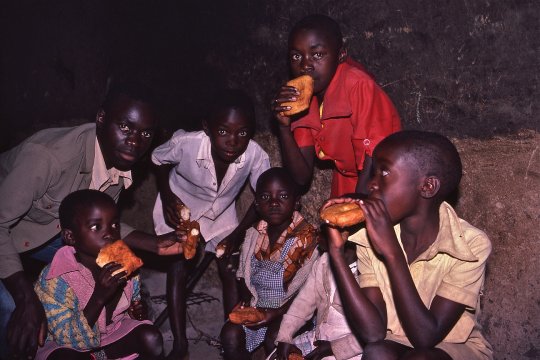 |
| 158. It was followed by a serving of mandazi (doughnuts). |
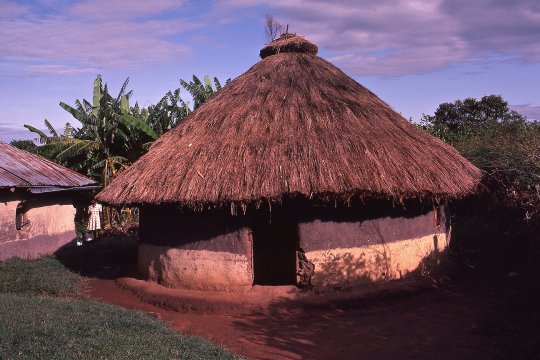 |
| 159. The buildings in their compound illustrated how domestic architecture had evolved. One house was built in traditional style, with round walls and a thatched roof. |
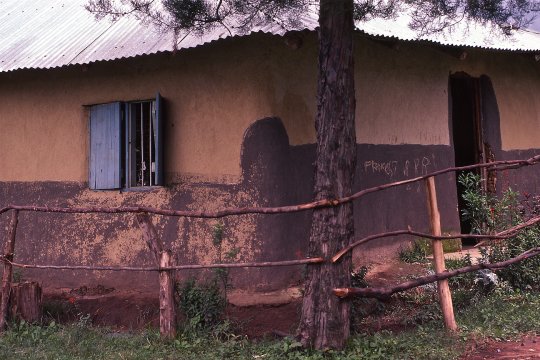 |
| 160. Next door, though, there was another home with mud walls, but this one was rectangular in shape and was roofed in corrugated iron. |
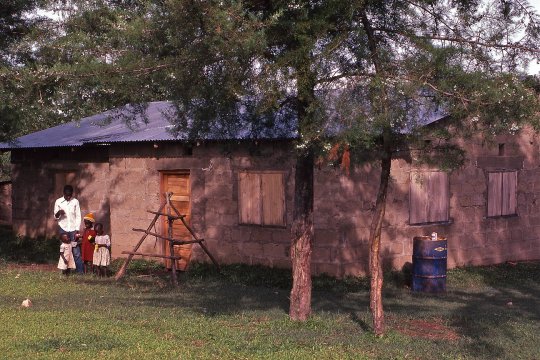 |
| 161. And beyond that the boys were building what they termed a “cottage” for themselves, from cement blocks and corrugated iron. |
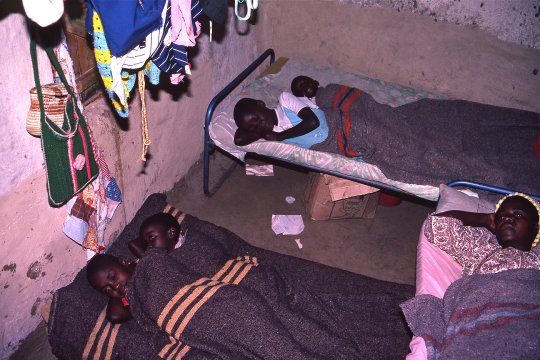 |
| 162. The rectangular home could accommodate rectangular beds. Here Josephine Mudanyi slept with her youngest child beside her; and the other young children similarly slept two to a bed. |
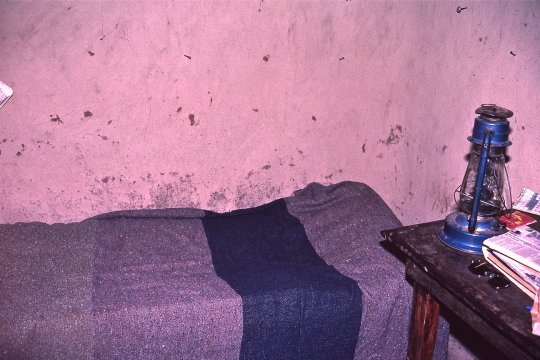 |
| 163. The older boys had a room of their own, where they could study as well as sleep. |
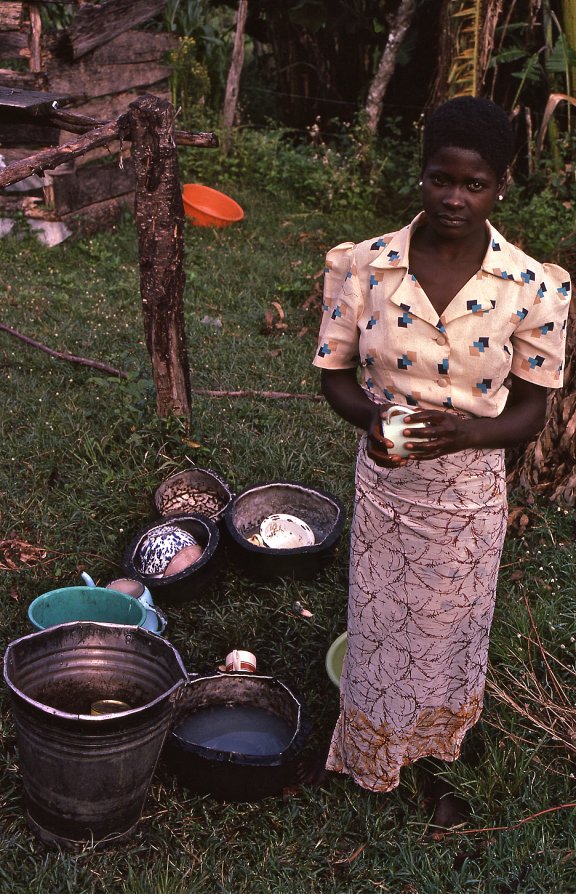 |
| 165. Beatrice carried the water and also washed the dishes every morning. She worked here for seven days a week for 100 shillings a month (which was average then). |
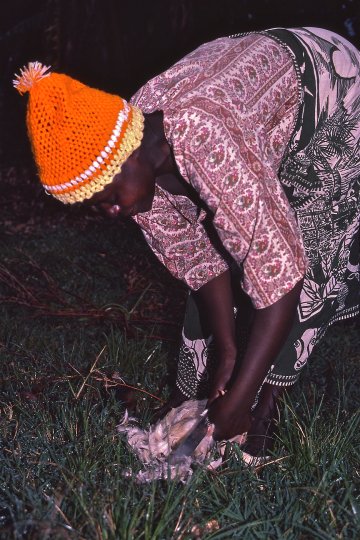 |
| 167. Meat was eaten rarely, but a chicken that refused to lay was strangled by Josephine ... |
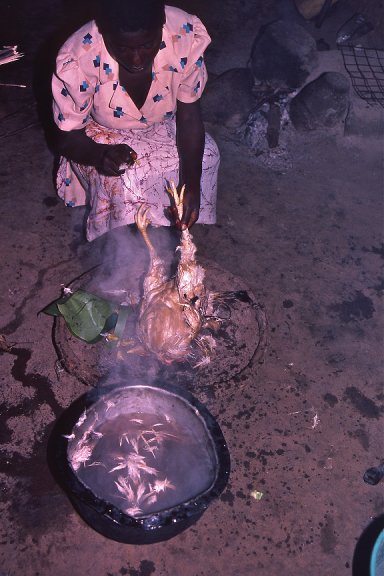 |
| 168. And plucked by Beatrice after it had been doused in boiling water. |
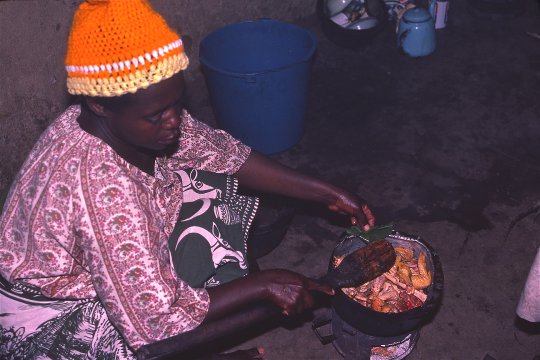 |
| 169. It was cut into pieces for frying over a charcoal stove ... |
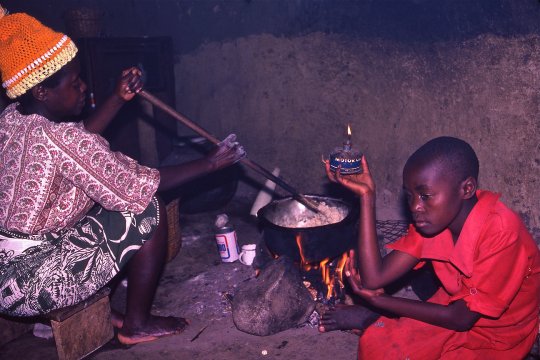 |
| 170. While Josephine prepared the ugali over a wood fire, with the help of her daughter |
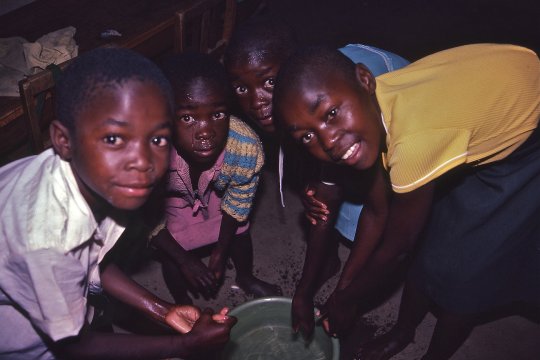 |
| 174. The next morning those of school age were up while it was still dark, and washed their hands ... |
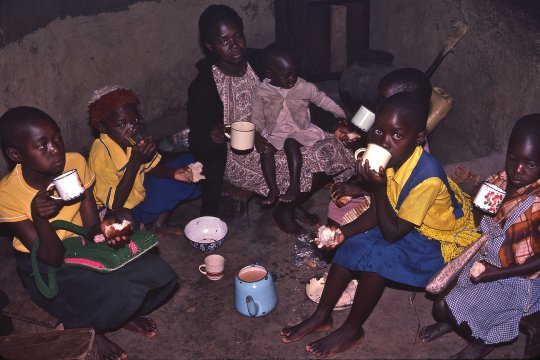 |
| 175. Before sitting down to a breakfast of chai (tea) and leftovers. |

![]()
Text, photos and recordings
by John Tyman
Intended for Educational Use
Only.
Contact Dr. John Tyman at johntyman2@gmail.com
for more information regarding
licensing.
![]()
www.hillmanweb.com
Photo processing, Web page layout,
formatting and hosting by
William
Hillman ~ Brandon, Manitoba ~ Canada